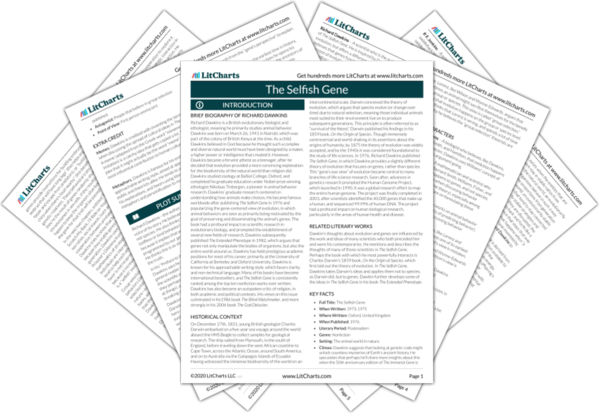AI ToolsNew
Tools to make learning and teaching easier
|
Previous
Chapter 5
|
The Selfish Gene: Chapter 6 Summary & Analysis |
Next
Chapter 7
|


Upgrade to unlock the analysis and theme tracking for all of The Selfish GeneThe Selfish Gene!
Get LitCharts A+